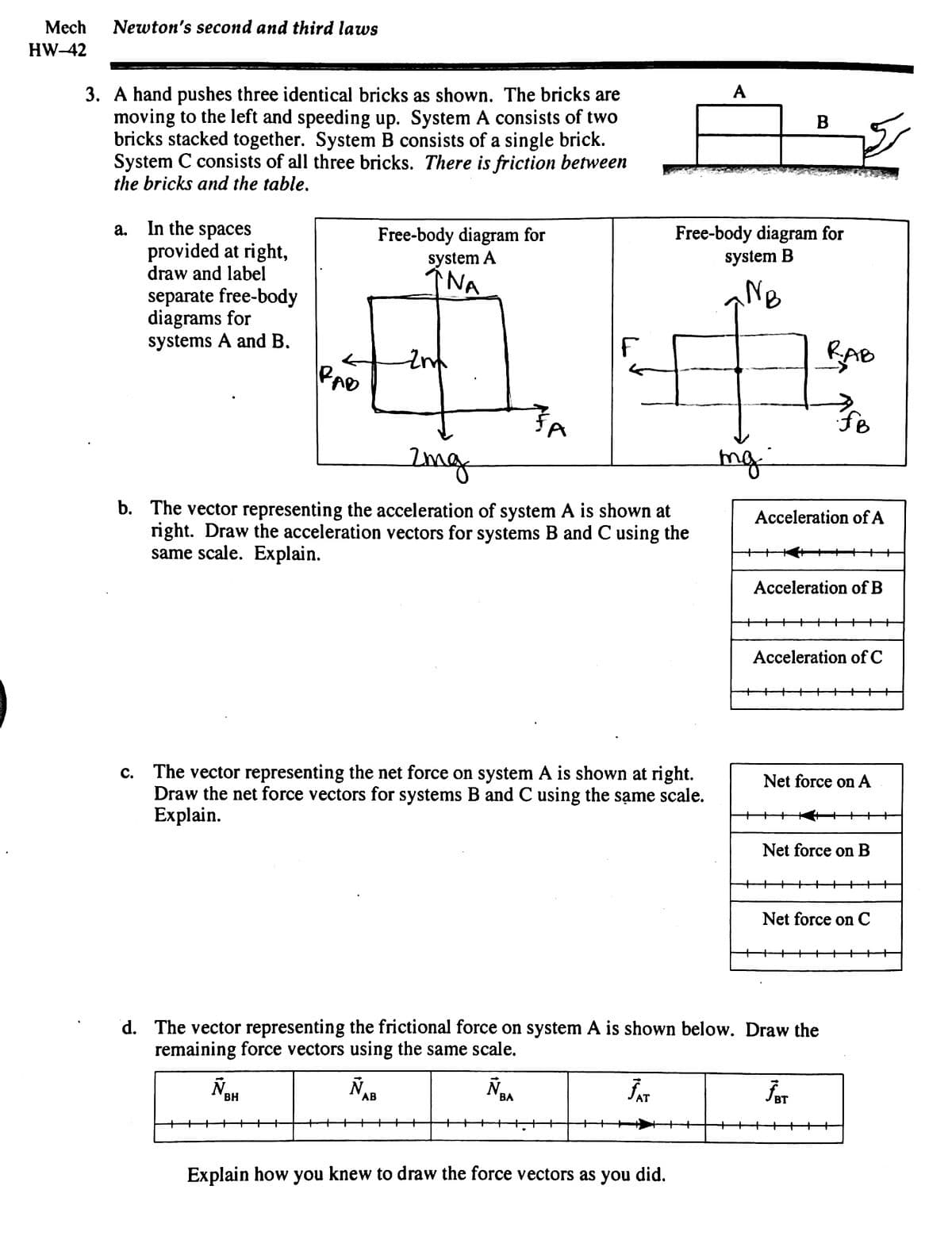A hand pushes three identical bricks as shown. The bricks are moving to the left and speeding up. System A consists of two bricks stacked together. System B consists of a single brick. System C consists of all three bricks. There is friction between the bricks and the table.
A hand pushes three identical bricks as shown. The bricks are moving to the left and speeding up. System A consists of two bricks stacked together. System B consists of a single brick. System C consists of all three bricks. There is friction between the bricks and the table.
International Edition---engineering Mechanics: Statics, 4th Edition
4th Edition
ISBN:9781305501607
Author:Andrew Pytel And Jaan Kiusalaas
Publisher:Andrew Pytel And Jaan Kiusalaas
Chapter1: Introduction To Statics
Section: Chapter Questions
Problem 1.19P: Plot the earths gravitational acceleration g(m/s2) against the height h (km) above the surface of...
Related questions
Question
Any help appreciated! Thanks! I am not sure if I did the first one right either.

Transcribed Image Text:Mech Newton's second and third laws
HW-42
3. A hand pushes three identical bricks as shown. The bricks are
moving to the left and speeding up. System A consists of two
bricks stacked together. System B consists of a single brick.
System C consists of all three bricks. There is friction between
the bricks and the table.
a.
In the spaces
provided at right,
draw and label
separate free-body
diagrams for
systems A and B.
C.
RAD
Free-body diagram for
system A
NA
Ñ₂
Zm
2mg
b. The vector representing the acceleration of system A is shown at
right. Draw the acceleration vectors for systems B and C using the
same scale. Explain.
BH
The vector representing the net force on system A is shown at right.
Draw the net force vectors for systems B and C using the same scale.
Explain.
F
Ñ
BA
A
Free-body diagram for
system B
NB
Explain how you knew to draw the force vectors as you did.
mg
B
d. The vector representing the frictional force on system A is shown below. Draw the
remaining force vectors using the same scale.
ÑAB
JAT
Acceleration of A
RAB
FB
Acceleration of B
Acceleration of C
Net force on A
کچھ
Net force on B
ĴAT
Net force on C
++
Expert Solution
This question has been solved!
Explore an expertly crafted, step-by-step solution for a thorough understanding of key concepts.
This is a popular solution!
Trending now
This is a popular solution!
Step by step
Solved in 6 steps with 9 images

Knowledge Booster
Learn more about
Need a deep-dive on the concept behind this application? Look no further. Learn more about this topic, mechanical-engineering and related others by exploring similar questions and additional content below.Recommended textbooks for you

International Edition---engineering Mechanics: St…
Mechanical Engineering
ISBN:
9781305501607
Author:
Andrew Pytel And Jaan Kiusalaas
Publisher:
CENGAGE L

International Edition---engineering Mechanics: St…
Mechanical Engineering
ISBN:
9781305501607
Author:
Andrew Pytel And Jaan Kiusalaas
Publisher:
CENGAGE L